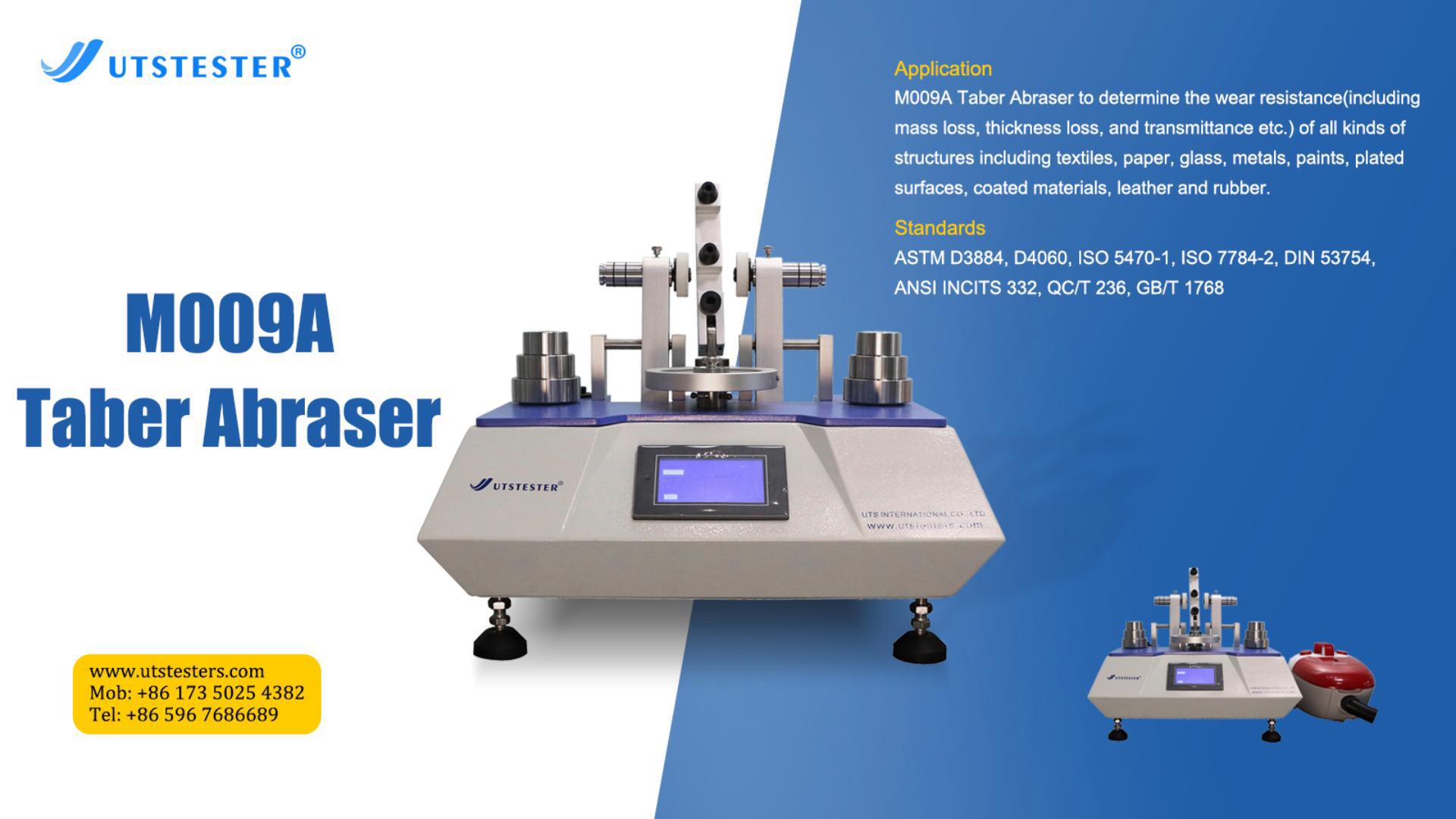 +86 152 6060 5085
+86 152 6060 5085
 +86 152 6060 5085
+86 152 6060 5085
Blog
Catalog
This paper mainly uses the Taber wear tester to conduct actual testing and analysis on the wear resistance of common shoe upper materials such as soft leather, artificial leather, synthetic leather, microfiber leather, textiles, etc., focusing on the screening and clarification of test conditions such as grinding wheel model and load, so as to provide a reference for standardizing related testing work and further formulating industry standards, and hopes to expand the application of international advanced test methods in footwear quality inspection.
According to the document [2011] No. 165 of the Ministry of Industry and Information Technology of the People's Republic of China, "Notice on Issuing the Third Batch of Industry Standards Formulation and Revision Plans in 2011", the industry standard "Test Method for Wear Resistance of Footwear Materials 1 (Taber Wear Tester Method)" is numbered: 2011-2639T-QB. The drafting team is jointly composed of the Inspection and Quarantine Technology Center of the Fujian Entry-Exit Inspection and Quarantine Bureau and the National Footwear Quality Supervision and Inspection Center (Wenzhou), responsible for drafting this industry standard. At present, the drafting work of this standard has entered the submission stage, and some of the verification data in this article comes from this standard-making project.
Test principle
The test sample is placed on a rotating platform, and the rotating platform drives the two friction wheels above it to roll. The friction wheels rotate and rub the sample under a certain load to wear the sample. One friction wheel faces outward, and the other friction wheel faces inward to rub the sample. The wear mark is an overlapping ring. After the specified number of friction circles, the sample surface wear and color change are graded and evaluated.
Sample preparation
Five common types of upper materials such as soft leather, artificial leather, synthetic leather, microfiber leather, and textiles are taken as test samples. Three representative samples of each type are taken for testing. Eight circular test samples with a diameter of (106±1)mm are cut from each test sample. After the test sample is folded twice, the overlapping corners are cut off with scissors to form a circular hole with a diameter of 6mm in the center. Test conditions The test is carried out under the conditions of temperature (20±2)℃ and humidity (65%6±5%). Before the test, the specimens should be placed in the standard environment required by GB/T22049-2008 “Footwear - Standard environment for environmental conditioning and testing of footwear and footwear components” [2] for more than 4 hours.
Test conditions
The test is conducted at a temperature of (20 ± 2) °C and a humidity of (65% ± 5%). Before the test, the sample should be placed in the standard environment required by GB/T22049-2008 "Standard environment for environmental conditioning and testing of footwear, footwear and footwear components" [2] for more than 4 hours.
Test procedure
Fix the sample with the front side facing up on the rotating platform and install the selected grinding wheel on the support bar. After selecting the appropriate load, lower the support bar so that the grinding wheel contacts the surface of the sample, and connect and turn on the dust collection device. Start the instrument and test according to the number of rotations set by the counter. For the upper material, the number of frictions is uniformly 500. After the test, remove the sample, check and record the wear of the sample, and use the gray scale according to GB/T 250-2008 "Grey scale for assessing color change in textiles" [3] to assess the color change and color fastness grade in the test area.
Conclusion
By testing and analyzing the wear resistance of five types of commonly used upper materials, including soft leather, artificial leather, synthetic leather, microfiber leather and textiles, the following conclusions were drawn: (1) For the wear resistance test of soft leather upper materials, it is appropriate to use a CS17 grinding wheel and a test load of 1000g; for the wear resistance test of artificial leather, synthetic leather and textile upper materials, it is appropriate to use an H18 grinding wheel and a test load of 500g; for the wear resistance test of microfiber leather upper materials, it is appropriate to use an H18 grinding wheel and a test load of 1000g. (2) The order of wear resistance of the five types of commonly used upper materials is generally: microfiber leather > artificial leather > synthetic leather > textile > natural leather. When designing and developing the upper of footwear products, reasonable material selection and matching can be carried out according to the advantages and disadvantages of the wear resistance of various upper materials, so as to effectively improve the durability and wearing life of footwear products. (3) Taber abrasion tester method is applicable to the wear resistance test of various commonly used upper materials. Its principle is scientific, the test steps are reasonable and standardized and easy to operate, and the evaluation of test results is more practical. On this basis, standard specifications for testing and evaluating the wear resistance of various shoe materials can be formed.

Email: hello@utstesters.com
Direct: + 86 152 6060 5085
Tel: +86-596-7686689
Web: www.utstesters.com